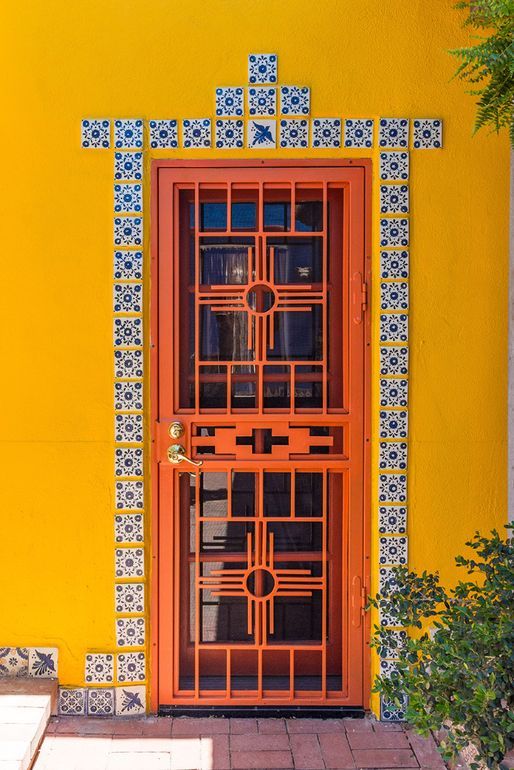#14511. Vibrant Colonial Facade with Traditional Ceramic Tiling and Geometric Door

This is a vibrant example of colonial architectural style with Mexican influences, where traditional elements meet an expressive color palette. The building's facade showcases a rich yellow wall that serves as a canvas for the other decorative elements. The central element of the composition is a terracotta-orange wooden door with a geometric pattern that creates an interesting play of light and shadow.
Special attention is drawn to the decorative framing of the doorway made of traditional blue and white ceramic tiles with ornaments characteristic of the Spanish-Mexican "azulejos" style. Such decorative facade treatment not only functionally protects the entrance from precipitation but also creates a contrasting visual accent on the monochromatic surface of the wall. The intricate pattern of the tiles rhymes with the geometric design of the door grill, creating a unified harmonious composition.
The design features symbolism typical of Southwestern US and Mexican architecture — stylized sun crosses can be seen in the door panel, which is a common motif in regional architecture. This technique can be used when designing your own home to give the facade cultural authenticity and character.
An important element of the composition is also the vegetation, which softens the geometric rigor of architectural forms and adds liveliness to the overall appearance of the building. When designing facades, it is worth considering such interaction between architecture and landscape — it creates a more organic and harmonious image of the structure.